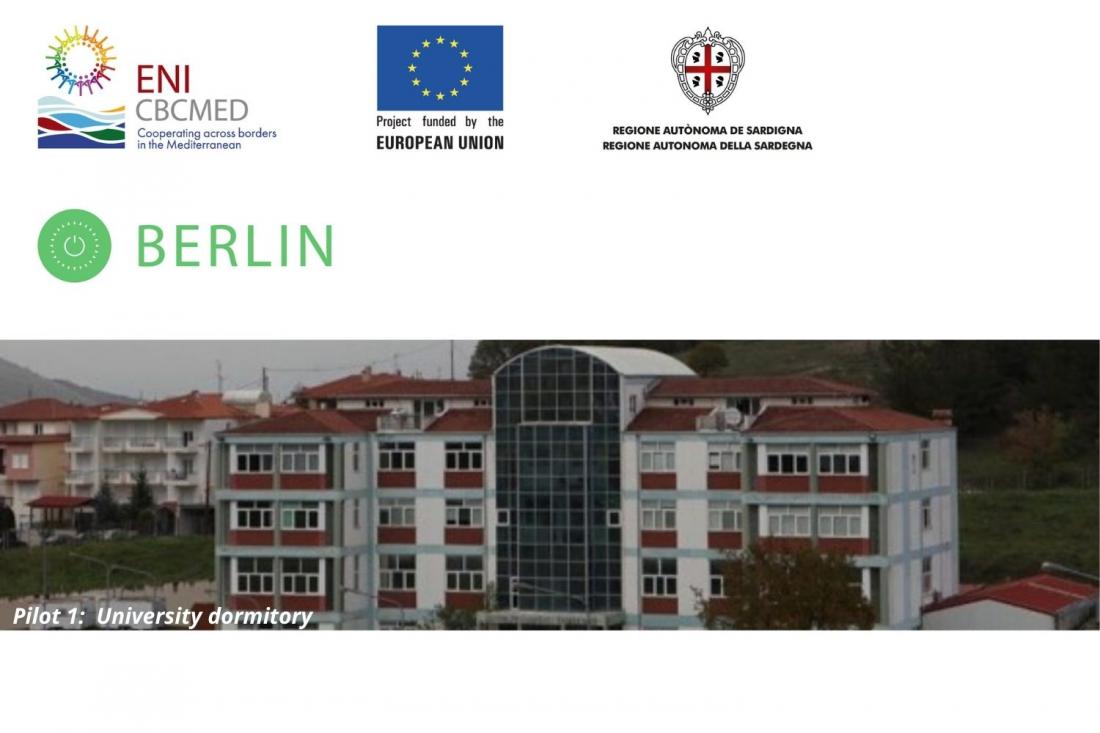BERLIN – How to turn high energy consumption public buildings to energy efficient buildings - Updates from the pilots in Greece

In Greece, the pilot phase of BERLIN project is close to commissioning. The required equipment has been purchased and installed.
The first pilot concerns the University of Western Macedonia student dormitory building in Koilada, Kozani which consists of three wings, hosting the student rooms, along with some administrative offices and a multi-function hall. The monitoring system has been installed, while the measurements collection process is being finalized. A photovoltaic (PV) system of 22.68 kWp is already installed on its roof, connected via a hybrid inverter with a storage system of 20.4 kWh capacity. An electric vehicle charging station will be installed at the car park of the dormitory building, capable of charging two vehicles at the same time. A system for the recording and the remote control of the corridors lighting system will also be installed. The system will be autonomous, and will communicate via Wi-Fi with a platform, for recording, direct viewing, and lighting control.
The second pilot of the Municipality of Hellespont in Koilada, Kozani, is also being commissioned. The former town hall building of the Hellespont Municipality in Koilada, Kozani, is a two-storey building with a basement, which hosts the services of the Municipality of Kozani. The new PV and storage systems are connected and tested. However, they will remain out of service until the required permission is acquired by the electrical distribution system operator. The contractor is currently configuring the metering system and the central controller, which should be properly adjusted to the newly installed inverter. The central electrical panel is located on the ground floor of the building, while on the roof, a PV system of 10 kWp is already installed. A storage system of 20 kWh is already installed at the basement. The electrical power of the building is monitored by energy meters-analysers. A system for the recording and the remote control of building loads (lighting and certain electrical sockets) will operate. The system will communicate via Wi-Fi with a platform, for recording, direct viewing, and control of lighting and electric loads. It is planned to install 10 such systems, capable of measuring electrical power, on/off power switching and sending/receiving data.







